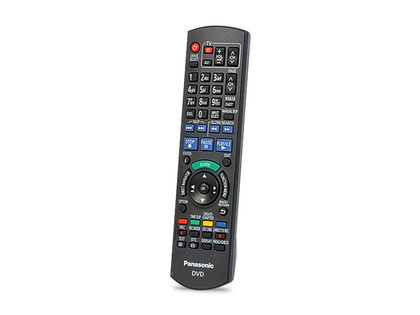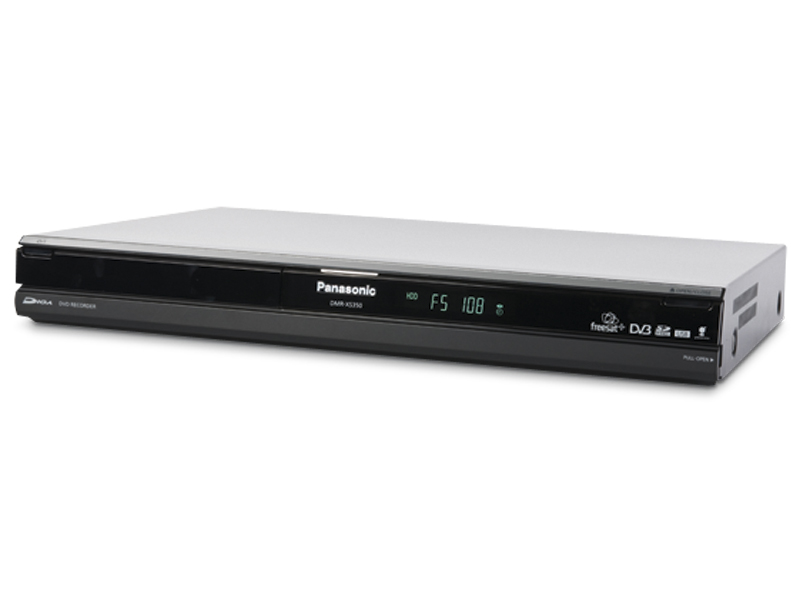TechRadar Verdict
A tad overpriced perhaps, but there's no arguing with the quality of this feature-packed, versatile recorder
Pros
- +
Excellent range of features
- +
Really easy to use
- +
Exceptional picture quality
Cons
- -
Price is a bit steep
Why you can trust TechRadar
Those who liked the look of Panasonic's revolutionary DMR-BS850 Freesat combi, but have no need for Blu-ray recording, might like to check out the DM-XS350A.
The XS350A is a cheaper alternative to the BS850, which records onto DVD and not Blu-ray, and sports a 250GB hard disk as opposed to the BS850's 500GB. Otherwise you get a similar range of features for around £400 less.
The most important of these are the twin hi-def capable Freesat tuners, which provide a level of flexibility that you don't get from any other DVD/HDD combi. It means that fans of both The One Show and Emmerdale never need miss either – they can watch one and record the other. You can also record both simultaneously and watch a previous recording, it's so versatile.
Recording TV
Like the BS850, the XS350 boasts the 14Mbps Direct Recording (DR) mode, which captures the original broadcast stream on the hard disk (including subtitles, Audio Description and 5.1-channel sound) without decoding it first. That way you get the cleanest pictures possible, but it does mean that you can't record Freesat programmes directly to DVD – everything has to be copied from the hard disk.

However, the lack of a Blu-ray drive means that you can't make copies of hi-def programmes in their native resolution. Although it is technically possible to record HD onto DVD, Panasonic is keen to draw the line between the two formats, hence this deck doesn't do it – despite having an efficient H.264 (MPEG4) encoder on board. There is a minor upside, though: with no copy protection flags to worry about, you can make as many copies as you like.
There are four H.264 recording modes that can be used to compress hi-def, hard-disk recordings and free up space. They are HG (which uses a bitrate of 12Mbps with a maximum HDD recording time of 40hrs), HX (8Mbps, 60hrs), HE (5Mbps, 90hrs) and HL (4Mbps, 120hrs). You also get four modes for DVD copying – XP, SP, LP and EP – offering between 1 and 14hrs of recording time on a single platter, depending on the disc type used.
Elsewhere it boasts all the killer features found on Panasonic's much-lauded Freeview combis. You can load MP3, JPEG, SD video and AVCHD onto the hard disk from USB port and SD card, creating a media library in your living room. You can also play music, photos and DivX from a flash drive connected to the USB port, or rip tracks from CD directly onto the hard disk.
Nestled among the regular connections on the rear is an Ethernet port. This facilitates the Viera Cast feature also found on the company's latest Blu-ray gear and plasma TVs, which currently enables you to watch videos from YouTube or browse photos from Google Picasa.

Rounding up the feature list is a comprehensive range of editing tools such as Partial Delete (great for removing adverts), as well as PVR-style features such as Pause Live TV and chasing playback.
Ease of use
A cutting-edge product like this could be a nightmare in the wrong hands, but thankfully, Panasonic has got operation down to a fine art. The XS350 is exceptionally easy to use, due to three key factors: the uncomplicated, no nonsense design applied to its onscreen displays (all pastel shaded boxes and large text), the instant responsiveness of the software and the remote, which cleverly separates its large, well-labelled buttons into clearly distinguishable sections.

The seven-day EPG is clearly laid out into a grid that shows seven channels at a time, or you can focus on an individual one. It's disappointing that you can't keep up with live TV while browsing.
To set the timer, you select the programme, and a series of screens lets you check all details such as whether or not you want to record the entire series, or the SD or HD version, if it's being simulcast.
Picture
Hi-def hard-disk recordings look magnificent, showing no signs of deterioration compared with the original broadcast. Wimbledon coverage on BBC HD is crisp and fluid, while detail is sharp. The delicate textures on the worn-down baseline and colour reproduction is effortlessly natural.
The high quality of the original BBC HD broadcast means that an XP mode DVD copy looks better than the same footage recorded from BBC One. Also impressive is the quality of the MPEG4 compression; hi-def tennis coverage converted into HL mode retains a distinct HD flavour, despite the increased amount of mosquito noise in the picture that results from the lower bitrate.
There are no complaints elsewhere – recordings from a Sky+ HD box look superb in XP, SP and even LP, while pre-recorded DVDs upscaled to 1080p are reproduced with pleasing depth and clarity.
Audio quality
One of Freesat's lesser publicised features is 5.1-channel Dolby Digital sound, which accompanies many hi-def broadcasts. We channelled the bitstream via HDMI to an AV receiver and with Wimbledon coverage the results are superb. Recorded stereo sound is clear and dynamic too.
It's expensive, granted, but if you can afford it we guarantee you won't be disappointed – there are loads of useful features and connections, the operating system is blissfully easy to use, and the twin Freesat tuners make it more flexible than your average HDD combi.
Follow TechRadar Reviews on Twitter: http://twitter.com/techradarreview
The TechRadar hive mind. The Megazord. The Voltron. When our powers combine, we become 'TECHRADAR TEAM'. You'll usually see this author name when the entire team has collaborated on a project or an article, whether that's a run-down ranking of our favorite Marvel films, or a round-up of all the coolest things we've collectively seen at annual tech shows like CES and MWC. We are one.
